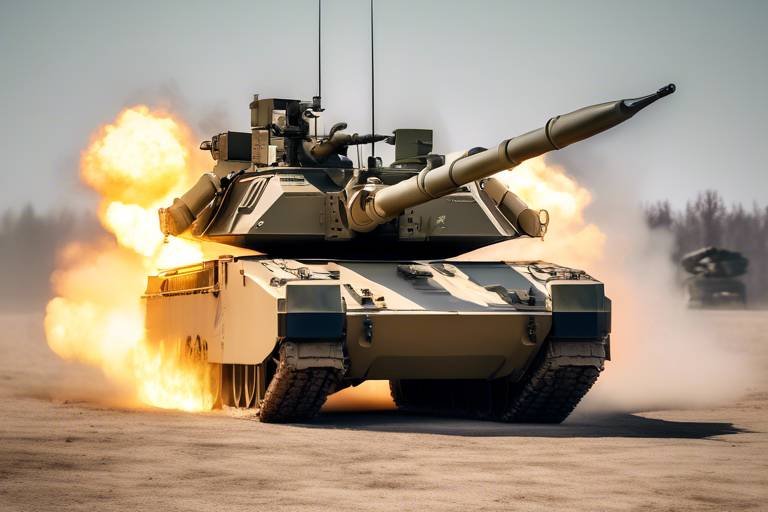How AI is Enhancing the Performance of Ground Drones
The world of technology is evolving at an astonishing pace, and one of the most exciting developments is the rise of ground drones powered by artificial intelligence (AI). These remarkable machines are not just flying in the skies; they are traversing our landscapes, and their capabilities are expanding in ways we could only dream of a few years ago. Imagine a drone that can navigate through dense forests, avoid obstacles, and make decisions on the fly without human intervention. Sounds like something out of a sci-fi movie, right? Well, it's happening now! AI is revolutionizing how these ground drones operate, enhancing their navigation, efficiency, and overall performance.
At the heart of this transformation lies advanced AI algorithms that are significantly improving navigation systems in ground drones. Traditional GPS systems have their limitations, especially in complex terrains where signals can be weak or obstructed. However, with AI, these drones can utilize enhanced GPS accuracy and obstacle detection systems that allow them to traverse even the most challenging environments with precision. Think of it as giving the drone a pair of smart eyes and a brain that can process what it sees in real-time, making it capable of navigating through obstacles like trees, rocks, or even urban landscapes.
Moreover, the ability of ground drones to make autonomous decisions is a game-changer. Imagine a drone deployed for search and rescue missions in a disaster-stricken area. With AI, it can analyze the situation, assess risks, and decide the best course of action without waiting for human commands. This level of autonomy not only enhances mission efficiency but also significantly improves safety, as these drones can react faster than any human could in critical situations. The implications of this technology are vast, spanning various applications from military operations to humanitarian aid.
One of the most fascinating aspects of AI in ground drones is their capability for real-time data processing. These drones are equipped with sensors that collect vast amounts of data as they operate. The integration of AI allows them to process this data on the fly, making them incredibly responsive to changes in their environment. It's like having a supercharged brain that can analyze information at lightning speed, enabling the drone to adapt to new challenges instantly. This capability is crucial for autonomous operations, where every second counts.
Machine learning techniques also play a pivotal role in enhancing the performance of ground drones. By learning from past experiences, these drones can improve their operations over time. For instance, if a drone encounters a particular obstacle during its mission, it can learn to recognize and navigate around it in future operations. This continuous learning process is akin to how humans learn from their mistakes, making the drones smarter and more efficient with each mission.
In addition to machine learning, integrating multiple sensors enhances a drone's situational awareness. By combining data from various sensors—such as cameras, LiDAR, and GPS—AI can create a comprehensive understanding of the environment. This multi-sensor integration allows ground drones to make informed decisions, improving their overall performance and reliability. It's like giving the drone a 360-degree view of its surroundings, ensuring it can navigate safely and efficiently.
As we delve deeper into the capabilities of AI-powered ground drones, it becomes clear that these technologies are not just enhancing speed and efficiency but are also paving the way for innovative applications across various industries. From agriculture to logistics, the benefits of AI-enhanced drones are becoming increasingly apparent, transforming the way we approach tasks and challenges in our daily lives.
- What are ground drones? Ground drones are unmanned vehicles designed to operate on the ground, utilizing AI and advanced navigation systems to perform various tasks autonomously.
- How does AI improve drone navigation? AI enhances drone navigation by improving GPS accuracy, enabling obstacle detection, and allowing real-time decision-making.
- What industries are benefiting from AI-powered ground drones? Industries such as agriculture, logistics, surveillance, and search and rescue are experiencing significant benefits from AI-enhanced ground drones.
- What challenges do AI-powered drones face? Challenges include regulatory compliance, technical limitations like battery life, and the need for advanced sensor integration.
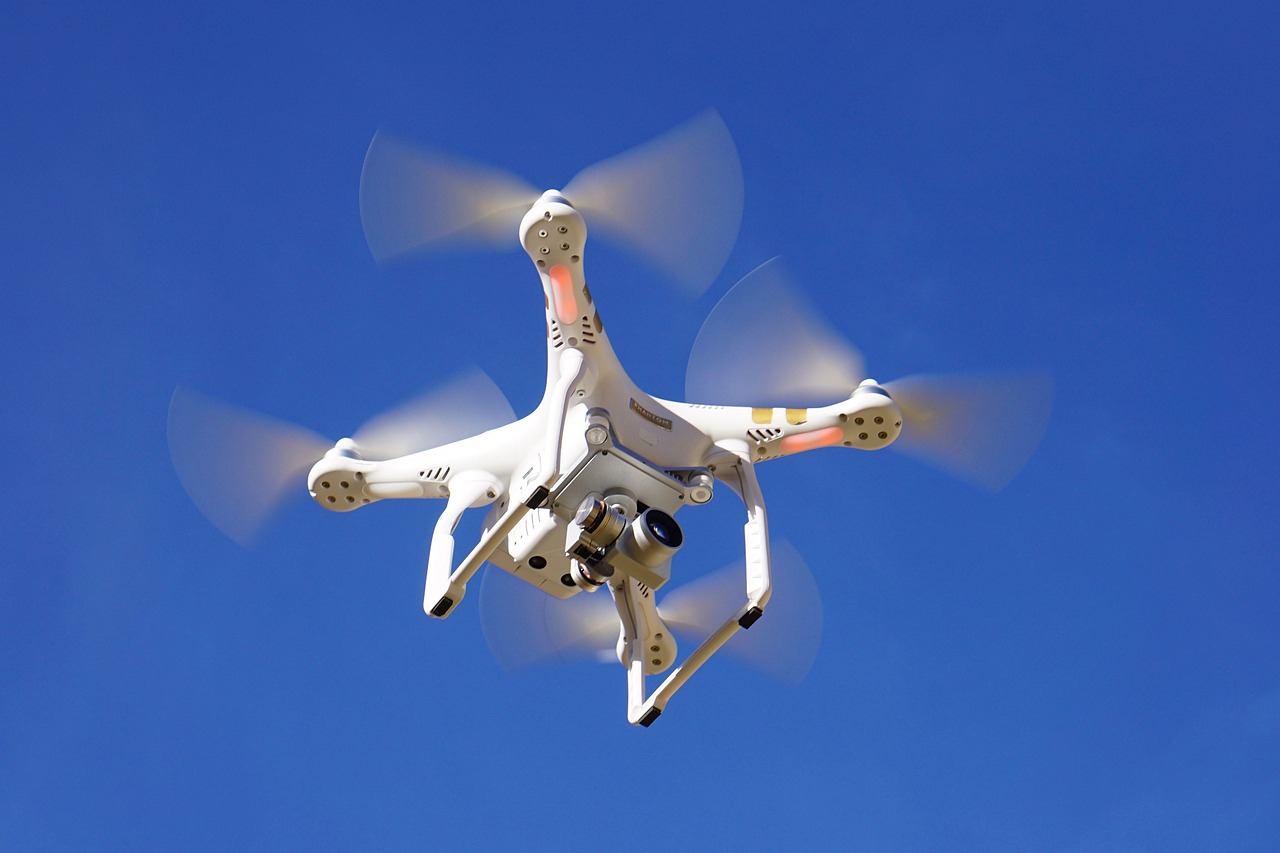
AI-Powered Navigation Systems
In the ever-evolving world of drone technology, stand out as a game-changer. Imagine a drone that can effortlessly navigate through dense forests, rocky terrains, or even urban landscapes, all while avoiding obstacles and optimizing its path. That's the magic of artificial intelligence at work. With advanced algorithms, these systems enhance the precision of GPS technology, making it possible for ground drones to operate in areas where traditional navigation methods would falter.
One of the most significant improvements brought about by AI is in the realm of obstacle detection. Drones can now utilize a combination of sensors and cameras to analyze their surroundings in real-time. This capability allows them to identify and avoid potential hazards, such as trees, buildings, or other drones. As a result, the risk of accidents is drastically reduced, leading to safer operations. The integration of AI enables drones to make split-second decisions, akin to a skilled pilot maneuvering through challenging skies.
Moreover, AI-powered navigation systems utilize machine learning to continuously improve their performance. By analyzing past flight data, these systems can learn from previous experiences, adapting their navigation strategies accordingly. For instance, if a drone encounters a particular type of terrain that previously caused difficulties, it can adjust its approach for future missions. This ability to learn and adapt is akin to how humans refine their skills through practice, making AI drones not just tools, but intelligent partners in various missions.
In addition to enhancing navigation, these systems also optimize route planning. AI algorithms can analyze multiple factors, such as weather conditions, terrain types, and even traffic patterns, to determine the most efficient paths for ground drones. This optimization not only saves time but also conserves energy, allowing drones to cover greater distances without compromising performance. By leveraging diverse data sources, drones can make informed decisions that enhance their operational capabilities.
To illustrate the effectiveness of AI-powered navigation systems, consider the following table that highlights key features and benefits:
| Feature | Benefit |
|---|---|
| Real-time obstacle detection | Reduces the risk of accidents and enhances safety |
| Machine learning adaptation | Improves navigation strategies over time |
| Efficient route planning | Saves time and energy during missions |
| Enhanced GPS accuracy | Enables operation in challenging environments |
In conclusion, AI-powered navigation systems are revolutionizing the way ground drones operate. By combining advanced algorithms with real-time data processing, these systems not only enhance safety and efficiency but also pave the way for new applications across various industries. As technology continues to advance, we can expect even more exciting developments in the realm of drone navigation.
- What are AI-powered navigation systems?
AI-powered navigation systems use artificial intelligence to enhance the navigation capabilities of ground drones, allowing them to navigate complex terrains with precision and avoid obstacles in real-time. - How do these systems improve safety?
By utilizing real-time obstacle detection and machine learning, AI-powered navigation systems significantly reduce the risk of accidents, making drone operations safer. - Can AI-powered drones learn from their experiences?
Yes! These drones can analyze past flight data and adapt their navigation strategies, similar to how humans improve their skills through practice. - What industries benefit from AI-powered navigation systems?
Various industries, including agriculture, logistics, and surveillance, are leveraging AI-powered navigation systems to enhance operational efficiency and safety.

Autonomous Decision-Making
Imagine a world where machines not only assist us but also make decisions on their own—this is the essence of in ground drones. These cutting-edge devices are equipped with sophisticated artificial intelligence algorithms that allow them to analyze data, assess situations, and make real-time decisions without the need for human intervention. This capability is not just a technological marvel; it’s a game-changer across various industries, from agriculture to logistics.
One of the most significant implications of autonomous decision-making is its impact on mission efficiency. For instance, in a search-and-rescue operation, a ground drone can quickly evaluate its surroundings, identify potential hazards, and determine the safest path to navigate through difficult terrains. This level of intelligence not only speeds up the operation but also enhances safety for both the drone and any individuals involved. The ability to make split-second decisions can mean the difference between success and failure in critical situations.
Moreover, the integration of real-time data processing allows these drones to adapt to changing environments. As they traverse landscapes, they continuously gather data from their surroundings, such as terrain conditions, weather changes, and even the presence of obstacles. This data is analyzed on-the-fly, enabling the drone to adjust its route or strategy as necessary. In essence, ground drones become more than just tools; they evolve into intelligent agents capable of responding dynamically to their environments.
For example, consider a drone deployed in agriculture for crop monitoring. It can autonomously decide when to change its flight path based on the health of the crops detected through its sensors. If it identifies a section of the field that appears stressed, it can prioritize that area for closer inspection or even alert farmers to potential issues. This capability not only saves time but also ensures that resources are allocated efficiently, maximizing yield and minimizing waste.
However, with great power comes great responsibility. The implications of autonomous decision-making also raise important ethical questions. For instance, how do we ensure that these drones make decisions that align with human values? What safeguards are in place to prevent unintended consequences? Addressing these concerns is crucial for the acceptance and integration of autonomous drones into our daily lives.
In summary, the advancement of autonomous decision-making in ground drones represents a leap forward in technology. By enabling these machines to process information and make decisions independently, we are not only enhancing their operational capabilities but also paving the way for innovative applications across various sectors. As we continue to explore the potential of AI in drone technology, it's essential to remain vigilant about the ethical implications and ensure that these advancements benefit society as a whole.
- What is autonomous decision-making in drones? Autonomous decision-making allows drones to analyze data and make decisions in real time without human input.
- How does AI improve drone efficiency? AI enhances drones' ability to process information quickly, enabling them to adapt to changing conditions and optimize their operations.
- What industries benefit from autonomous drones? Industries such as agriculture, logistics, and surveillance benefit significantly from the capabilities of autonomous drones.
- Are there ethical concerns with autonomous drones? Yes, ethical concerns include ensuring that drones make decisions that align with human values and preventing unintended consequences.

Real-Time Data Processing
The advent of artificial intelligence has fundamentally transformed how ground drones operate, particularly in their ability to process data in real-time. Imagine a drone soaring through a complex environment, equipped with the capability to analyze vast amounts of information almost instantaneously. This is not just a futuristic fantasy; it’s a reality brought to life by AI. Real-time data processing allows drones to adapt to their surroundings, making split-second decisions that enhance their operational effectiveness. For instance, when a drone encounters an unexpected obstacle, its AI algorithms can quickly assess the situation and determine the best course of action, whether that means rerouting or adjusting its altitude.
This capability is particularly crucial in environments where conditions can change rapidly, such as in disaster response scenarios or during agricultural monitoring. The ability to process data in real-time means that drones can provide immediate feedback to operators, improving situational awareness. Consider a scenario where a drone is surveying a large field for crop health. As it collects data on soil moisture, nutrient levels, and pest infestations, it can analyze this information on the fly, allowing farmers to make informed decisions without delay. This not only saves time but also maximizes resource efficiency, directly impacting yield and profitability.
Moreover, the integration of advanced machine learning models plays a pivotal role in enhancing real-time data processing. These models enable drones to learn from past experiences, refining their algorithms to improve accuracy and responsiveness. For example, if a drone encounters a specific type of obstacle multiple times, it can adjust its navigation strategy based on those past encounters. This learning process is akin to how humans adapt their behavior based on previous experiences, making drones increasingly intelligent over time.
To illustrate the significance of real-time data processing in drone operations, consider the following table that outlines key benefits:
| Benefit | Description |
|---|---|
| Enhanced Decision-Making | Drones can make immediate decisions based on real-time data, improving mission outcomes. |
| Increased Efficiency | Real-time analysis reduces downtime and optimizes resource allocation. |
| Improved Safety | By detecting obstacles and hazards quickly, drones can avoid accidents and ensure safer operations. |
In summary, real-time data processing is a game-changer for ground drones, enabling them to operate with unprecedented agility and intelligence. As AI continues to evolve, we can expect even greater advancements in how drones analyze and respond to their environments, paving the way for more efficient and effective applications across various industries.
- What is real-time data processing in drones?
Real-time data processing refers to the ability of drones to analyze and respond to data as it is collected, allowing for immediate decision-making and operational adjustments. - How does AI improve a drone's performance?
AI enhances a drone's performance by enabling it to learn from past experiences, process data quickly, and make autonomous decisions, which improves efficiency and safety. - What industries benefit from real-time data processing in drones?
Industries such as agriculture, logistics, surveillance, and disaster response benefit significantly from real-time data processing, as it allows for timely insights and actions.

Machine Learning Techniques
When we talk about in the context of ground drones, we're diving into a fascinating world where technology meets intelligence. These techniques allow drones to analyze vast amounts of data, learn from their experiences, and improve their operations over time. Imagine a drone that not only follows a set path but also adapts to its environment, avoiding obstacles and making decisions based on real-time data. That's the power of machine learning!
One of the most significant aspects of machine learning is its ability to use historical data to train algorithms. For instance, a drone deployed in a specific area can gather data on various environmental factors like terrain, weather, and obstacles. By applying supervised learning, the drone can learn from labeled datasets, understanding which behaviors lead to successful navigation in different scenarios. Over time, it becomes increasingly adept at predicting the best routes and actions, significantly reducing the chances of accidents or inefficiencies.
Additionally, reinforcement learning plays a crucial role in enhancing the capabilities of ground drones. This technique involves training algorithms through trial and error. The drone receives feedback based on its actions—if it successfully avoids an obstacle, it gets a reward; if it collides, it learns to adjust its behavior. This dynamic learning process enables drones to become more autonomous and efficient, effectively turning them into intelligent agents capable of making complex decisions on the fly.
Moreover, unsupervised learning techniques allow drones to identify patterns and anomalies in data without pre-existing labels. For example, when a drone is tasked with mapping an area, it can use clustering algorithms to group similar terrain types, helping it to optimize its navigation strategy. This is particularly useful in applications like disaster response, where the drone needs to quickly adapt to unpredictable and rapidly changing environments.
To illustrate how these techniques work together, consider the following table that summarizes key machine learning methods used in ground drones:
| Machine Learning Technique | Description | Application in Drones |
|---|---|---|
| Supervised Learning | Learning from labeled data to predict outcomes. | Route optimization based on historical flight data. |
| Reinforcement Learning | Learning through trial and error with feedback. | Dynamic obstacle avoidance and decision-making. |
| Unsupervised Learning | Identifying patterns in data without labels. | Terrain classification for efficient navigation. |
In summary, the integration of machine learning techniques into ground drones is a game-changer. It not only enhances their operational efficiency but also empowers them to navigate complex environments autonomously. As these technologies continue to evolve, we can expect even more sophisticated applications that will redefine how we perceive and utilize drone technology.
- What is machine learning in drones?
Machine learning in drones refers to the use of algorithms that enable drones to learn from data, adapt to their environment, and improve their performance over time. - How does reinforcement learning benefit ground drones?
Reinforcement learning allows drones to learn from their actions and the consequences of those actions, enabling them to make better decisions in real-time. - Can drones operate without human input?
Yes, with advanced machine learning techniques, drones can operate autonomously, making real-time decisions based on sensory data.
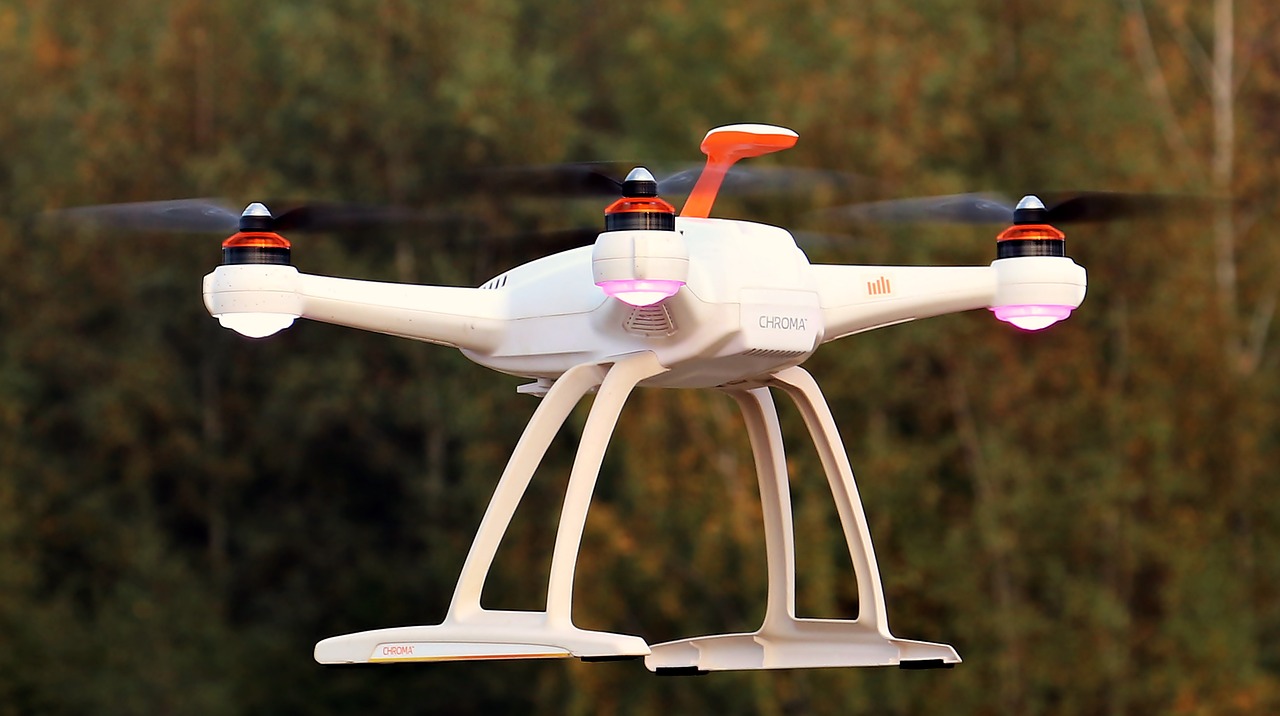
Sensor Integration
In the rapidly evolving world of drone technology, has emerged as a cornerstone for enhancing the capabilities of ground drones. Imagine a drone as a highly skilled athlete; just as an athlete relies on various training techniques and tools to excel, drones depend on an array of sensors to navigate, analyze, and respond to their environment effectively. The integration of multiple sensors—such as LiDAR, cameras, GPS, and ultrasonic sensors—provides drones with a comprehensive understanding of their surroundings, enabling them to make informed decisions in real-time.
These sensors work in harmony, creating a rich tapestry of data that informs the drone's operational decisions. For instance, while a GPS unit provides positional data, LiDAR can map the terrain's topography, and cameras can identify specific objects or obstacles. This fusion of information enhances a drone's situation awareness, allowing it to navigate complex environments with remarkable precision. Without this integration, a drone would be akin to a pilot flying blind, relying solely on one instrument instead of a full cockpit of navigational aids.
Moreover, the efficiency of sensor integration is amplified through the use of artificial intelligence. AI algorithms can analyze the data collected from various sensors, identifying patterns and anomalies that would be impossible for a human operator to discern in real-time. For example, in a search and rescue mission, a drone equipped with thermal imaging sensors can detect heat signatures of individuals, while its GPS system tracks its location, and AI processes this data to optimize the search pattern. This synergy not only boosts the efficiency of operations but also enhances safety by reducing the potential for human error.
To illustrate the impact of sensor integration, consider the following table that outlines the key sensors used in ground drones and their respective functions:
| Sensor Type | Function |
|---|---|
| LiDAR | Maps terrain and detects obstacles |
| Cameras | Provides visual data and object recognition |
| GPS | Offers precise location tracking |
| Ultrasonic Sensors | Measures distance to objects |
As we look to the future, the potential for further advancements in sensor integration is vast. Researchers are exploring new types of sensors, such as hyperspectral imaging, which can provide detailed information about materials and substances. This could revolutionize fields like environmental monitoring and agriculture, allowing drones to assess crop health with unprecedented accuracy.
In conclusion, sensor integration is not just a technical enhancement; it is a transformative force that elevates the functionality of ground drones. By blending various sensor technologies with AI, we are paving the way for drones that are not only smarter but also more capable of tackling complex tasks across diverse applications.
- What are the main benefits of sensor integration in ground drones? Sensor integration enhances situational awareness, improves navigation accuracy, and enables real-time decision-making, making drones more effective in their operations.
- How does AI contribute to sensor integration? AI processes the data collected from various sensors, identifying patterns and optimizing the drone's responses to environmental changes.
- What types of sensors are commonly used in ground drones? Common sensors include LiDAR, cameras, GPS, and ultrasonic sensors, each serving unique functions to enhance the drone's capabilities.
- Can drones operate effectively without integrated sensors? While drones can function with limited sensor capabilities, integrated sensors significantly increase their efficiency, safety, and operational range.

Improved Efficiency and Speed
In the ever-evolving world of technology, efficiency and speed are paramount, especially when it comes to ground drones powered by artificial intelligence. These drones are not just flying through the air; they are traversing complex landscapes and performing tasks that require rapid decision-making and execution. With AI at the helm, these drones are achieving unprecedented levels of operational efficiency that were once thought to be impossible. Imagine a drone that can analyze its surroundings, assess the best route, and execute its mission faster than a human could even plan it. This is the reality we are stepping into.
One of the most significant ways AI enhances efficiency is through algorithmic optimization. Drones equipped with advanced AI algorithms can process vast amounts of data in real-time, allowing them to make instantaneous decisions. For instance, when faced with an obstacle, an AI-powered drone can quickly calculate alternative routes, minimizing downtime and maximizing productivity. This ability to adapt on the fly not only saves time but also reduces the resources required for each mission, making operations more cost-effective.
The integration of AI also streamlines operational processes. Consider the logistics industry, where ground drones are increasingly used for delivery services. By leveraging AI, these drones can optimize their delivery routes based on real-time traffic data, weather conditions, and even customer preferences. This means that what once took hours can now be accomplished in mere minutes, leading to a more efficient supply chain. As a result, businesses can save on fuel costs, reduce their carbon footprint, and enhance customer satisfaction by ensuring timely deliveries.
Furthermore, the combination of AI with machine learning techniques allows these drones to learn from their experiences. Each mission provides valuable data that can be analyzed to improve future performance. For example, if a drone encounters a specific type of terrain that slows it down, it can adjust its algorithms to navigate that terrain more effectively in future missions. This continuous improvement cycle is akin to a student learning from past mistakes to ace their exams. It’s this capability that sets AI-powered drones apart from their traditional counterparts.
To illustrate the impact of AI on efficiency and speed, consider the following table that compares traditional drones and AI-enhanced drones across various operational metrics:
| Metric | Traditional Drones | AI-Enhanced Drones |
|---|---|---|
| Route Optimization | Static, pre-planned | Dynamic, real-time adjustments |
| Data Processing Speed | Limited | High-speed, real-time processing |
| Learning Capability | None | Continuous learning and adaptation |
| Operational Efficiency | Moderate | High |
This table highlights how AI is not just a minor enhancement but a transformative force in the world of ground drones. As we continue to integrate AI into drone technology, we can expect to see even greater improvements in efficiency and speed, paving the way for new applications and possibilities that can change the way we operate in various industries.
- What are the main benefits of AI in ground drones? AI enhances navigation, decision-making, and operational efficiency, allowing drones to perform tasks more effectively.
- How does AI improve route optimization? AI analyzes real-time data to adjust routes based on current conditions, ensuring faster and more efficient deliveries.
- Can AI-enabled drones learn from their experiences? Yes, AI allows drones to learn and adapt their algorithms based on past missions to improve future performance.
- What industries are benefiting from AI-powered drones? Industries such as agriculture, logistics, and surveillance are experiencing significant improvements thanks to AI-enhanced drones.

Applications in Various Industries
Ground drones powered by artificial intelligence are not just a futuristic concept; they are actively transforming various industries today. From agriculture to logistics and surveillance, these drones are enhancing operational efficiency and providing innovative solutions to longstanding challenges. Imagine a world where farmers can monitor their crops from the sky, logistics companies can deliver packages faster, and security personnel can patrol areas with minimal human intervention. This is not science fiction; it is happening right now, thanks to AI-enhanced ground drones.
In the realm of precision agriculture, for instance, AI-driven drones are revolutionizing how farmers approach crop management. These drones are equipped with advanced sensors and imaging technology that allow them to gather critical data about soil health, crop density, and even pest infestations. By analyzing this data, farmers can make informed decisions about irrigation, fertilization, and pest control. This not only optimizes farming practices but also significantly increases crop yield. For example, a recent study showed that farmers using AI-enhanced drones reported a 20% increase in yield due to more precise resource allocation.
Similarly, in the logistics and delivery sector, AI-powered ground drones are reshaping supply chain dynamics. These drones can analyze real-time traffic data and weather conditions to optimize delivery routes. This means that packages can be delivered faster and more efficiently, reducing operational costs for companies. A notable example is a major e-commerce giant that has started using AI-driven drones for last-mile delivery, achieving a 30% reduction in delivery times. The ability to track packages in real-time also enhances customer satisfaction, as consumers can receive updates about their deliveries at every stage.
Furthermore, in the field of surveillance and security, AI-enhanced ground drones are becoming invaluable tools. They can autonomously patrol designated areas, providing real-time video feeds to security personnel. This capability not only improves response times but also enhances situational awareness. For instance, law enforcement agencies are beginning to use these drones for monitoring large public events, ensuring safety while minimizing human resource allocation. The integration of AI allows these drones to recognize unusual activities and alert human operators, thereby acting as a force multiplier in security operations.
In summary, the applications of AI-powered ground drones are vast and varied. As technology continues to advance, we can expect even more innovative uses across different sectors. The potential for increased efficiency, cost savings, and improved outcomes is simply too significant to ignore. As industries continue to adopt this technology, the future looks bright for AI-enhanced ground drones.
- What industries are currently using AI-powered ground drones?
AI-powered ground drones are being utilized in agriculture, logistics, surveillance, and even construction, among other industries. - How do AI drones improve agricultural practices?
They provide real-time data on crop health, soil conditions, and pest activity, enabling farmers to make better decisions and enhance yields. - What are the benefits of using drones in logistics?
Drones optimize delivery routes, reduce delivery times, and improve package tracking, leading to increased efficiency and customer satisfaction. - Can AI drones operate autonomously?
Yes, many AI-powered drones can make real-time decisions and operate without human intervention, enhancing safety and efficiency.
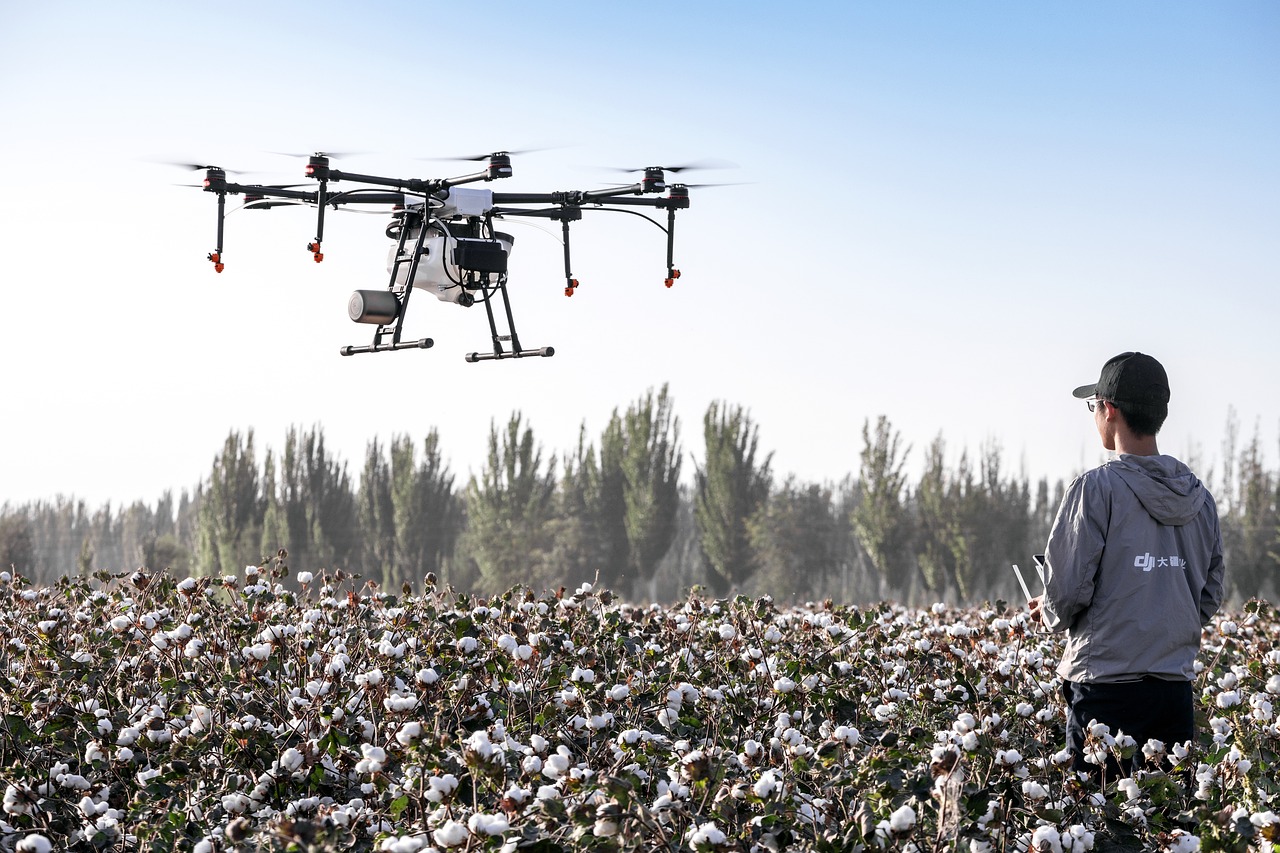
Precision Agriculture
In the realm of modern farming, has emerged as a game-changer, and at the forefront of this revolution are AI-powered ground drones. These technological marvels are not just flying high above the fields; they are actively transforming the way farmers monitor and manage their crops. Imagine having a bird's-eye view of your entire farm, equipped with real-time data that can help you make informed decisions about irrigation, fertilization, and pest control. That's exactly what these drones offer!
Utilizing advanced sensors and AI algorithms, drones can collect a wealth of information about crop health, soil conditions, and moisture levels. This data is then processed to provide farmers with actionable insights, allowing them to optimize their farming practices. For instance, by analyzing aerial imagery, farmers can identify areas of their fields that require more attention, pinpointing problems such as nutrient deficiencies or pest infestations before they become widespread.
One of the standout features of AI-enhanced drones in precision agriculture is their ability to perform variable rate applications. This means that instead of applying fertilizers or pesticides uniformly across the entire field, drones can target specific areas based on the data collected. This not only conserves resources but also minimizes environmental impact, making farming more sustainable. To illustrate, consider the following table that summarizes the benefits of using drones in precision agriculture:
| Benefit | Description |
|---|---|
| Improved Crop Monitoring | Real-time data collection allows for timely interventions. |
| Resource Efficiency | Targeted applications reduce waste of fertilizers and pesticides. |
| Increased Yields | Data-driven decisions lead to healthier crops and higher productivity. |
| Cost Savings | Reduced input costs through optimized resource management. |
Furthermore, the integration of AI with drone technology allows for the analysis of historical data, enabling farmers to predict future trends and make proactive adjustments. For example, if a farmer notices that certain areas of their field consistently yield less than others, they can investigate the underlying causes—be it soil quality, drainage issues, or pest problems—and address them accordingly. This predictive capability is akin to having a crystal ball for your crops!
As we look to the future, the potential of AI-powered drones in precision agriculture is boundless. With ongoing advancements in technology, we can expect even greater improvements in data accuracy and drone capabilities. Farmers will not only be able to enhance their productivity but also contribute to a more sustainable agricultural model that benefits the environment and society as a whole.
- What is precision agriculture?
Precision agriculture refers to the use of technology, including AI and drones, to monitor and manage crop production more efficiently. - How do drones improve farming?
Drones provide real-time data on crop health, soil conditions, and moisture levels, enabling farmers to make informed decisions. - Are AI-powered drones expensive?
While there is an initial investment, the long-term savings and increased yields typically outweigh the costs. - Can drones be used for all types of crops?
Yes, drones can be adapted for various crops, making them versatile tools in agriculture.

Logistics and Delivery
In the ever-evolving world of logistics and delivery, AI-driven ground drones are emerging as game-changers. These smart machines are not just a futuristic idea; they are actively reshaping how goods are transported and delivered. Imagine a world where packages arrive at your doorstep faster than you can say "same-day delivery." That's the reality that AI-enhanced drones are creating. By leveraging advanced algorithms and real-time data processing, these drones optimize routes, ensuring that deliveries are not only quick but also efficient.
One of the most significant advantages of using AI in logistics is the ability to analyze vast amounts of data. Drones equipped with AI can evaluate traffic patterns, weather conditions, and even road closures in real-time. This capability allows them to make dynamic routing decisions that traditional delivery methods simply can't match. For instance, if a drone detects a traffic jam ahead, it can instantly reroute itself to avoid delays, ensuring that your package arrives on time.
Moreover, AI-powered drones are enhancing package tracking systems. With integrated sensors and GPS technology, they provide real-time updates on the location of your delivery. This transparency not only improves customer satisfaction but also reduces the anxiety often associated with waiting for a package. Customers can track their deliveries with pinpoint accuracy, knowing exactly when to expect their items.
However, the integration of AI in logistics isn't just about speed and efficiency; it also brings significant cost savings. By optimizing delivery routes and reducing the need for human labor, companies can cut operational costs dramatically. A recent study showed that businesses utilizing AI-driven drones saw a 20% reduction in delivery costs within the first year of implementation. These savings can be redirected into enhancing customer service or expanding product offerings, creating a win-win situation for businesses and consumers alike.
Despite the numerous benefits, it's essential to recognize that the deployment of AI drones in logistics also comes with its challenges. Regulatory compliance is a significant hurdle that companies must navigate. As drones become more prevalent in urban environments, ensuring that they operate safely and within legal frameworks is crucial. Additionally, technical limitations, such as battery life and payload capacity, still need to be addressed to maximize their potential.
In summary, AI-driven ground drones are revolutionizing logistics and delivery by enhancing efficiency, reducing costs, and improving customer satisfaction. As technology continues to advance, we can expect even more innovative solutions that will transform the way goods are delivered, making the process faster, safer, and more reliable.
- How do AI drones optimize delivery routes? AI drones analyze real-time data such as traffic and weather conditions to make dynamic routing decisions, ensuring timely deliveries.
- What are the cost benefits of using AI drones in logistics? Companies can reduce operational costs by optimizing routes and minimizing labor needs, leading to significant savings.
- Are there regulatory challenges for AI drones? Yes, navigating regulatory frameworks is crucial for safe and legal drone operations in urban areas.
- What limitations do AI drones face? Technical challenges such as battery life and payload capacity are still being researched and improved.

Challenges and Limitations
As we dive deeper into the world of AI-powered ground drones, it's essential to acknowledge that, despite their incredible advancements, these technologies come with their fair share of challenges and limitations. The journey of integrating artificial intelligence into drone operations is not without its bumps in the road. Regulatory hurdles and technical limitations are two primary areas that demand attention.
First, let's talk about regulatory compliance. As governments around the world scramble to establish frameworks for drone usage, the rules can often be confusing and inconsistent. Different countries have different regulations, which can lead to a patchwork of compliance requirements that drone operators must navigate. For instance, in the United States, the Federal Aviation Administration (FAA) has specific guidelines for commercial drone operations, while other countries may have more lenient or stringent rules. This inconsistency can create uncertainty for businesses looking to adopt AI-enhanced drones. Moreover, as these technologies evolve, regulations must keep pace, which can be a daunting task for lawmakers. The need for regulatory bodies to ensure safety while promoting innovation is a delicate balance that is still being figured out.
Next up is the technical limitations that ground drones currently face. While AI has made significant strides in enhancing drone capabilities, certain technical challenges remain. One major issue is battery life. Most ground drones are limited by the amount of energy their batteries can store, which restricts their operational range and duration. Imagine trying to run a marathon with a limited supply of water; you wouldn't get very far, right? Similarly, drones can only operate effectively for a limited time before needing to recharge, which can hinder their efficiency, especially in critical applications like search and rescue missions.
Another technical challenge is sensor accuracy. While integrating multiple sensors can enhance a drone's situational awareness, the accuracy of these sensors can vary. For example, GPS signals can be obstructed in urban environments or heavily wooded areas, leading to navigation errors. This issue can be particularly problematic when precision is paramount, such as in agricultural applications where drones are used to monitor crop health. Ongoing research and development are essential to overcome these limitations, and advancements in battery technology and sensor design are critical to unlocking the full potential of AI-enhanced ground drones.
In conclusion, while AI is transforming the landscape of ground drones, it is crucial to address these challenges head-on. Regulatory compliance and technical limitations pose significant hurdles that must be overcome for widespread adoption. As the industry continues to evolve, collaboration between regulators, technologists, and operators will be key to paving the way for safer and more efficient drone operations in the future.
- What are the main challenges faced by AI-powered ground drones?
The primary challenges include regulatory compliance and technical limitations such as battery life and sensor accuracy. - How do regulations impact the use of ground drones?
Regulations can vary significantly by country, creating confusion and uncertainty for operators, which can hinder the adoption of drone technology. - What advancements are being made to improve drone battery life?
Ongoing research focuses on developing more efficient battery technologies and exploring alternative energy sources to extend operational time. - How does sensor accuracy affect drone performance?
Inaccurate sensors can lead to navigation errors, affecting the drone's ability to perform tasks such as crop monitoring and search and rescue operations.
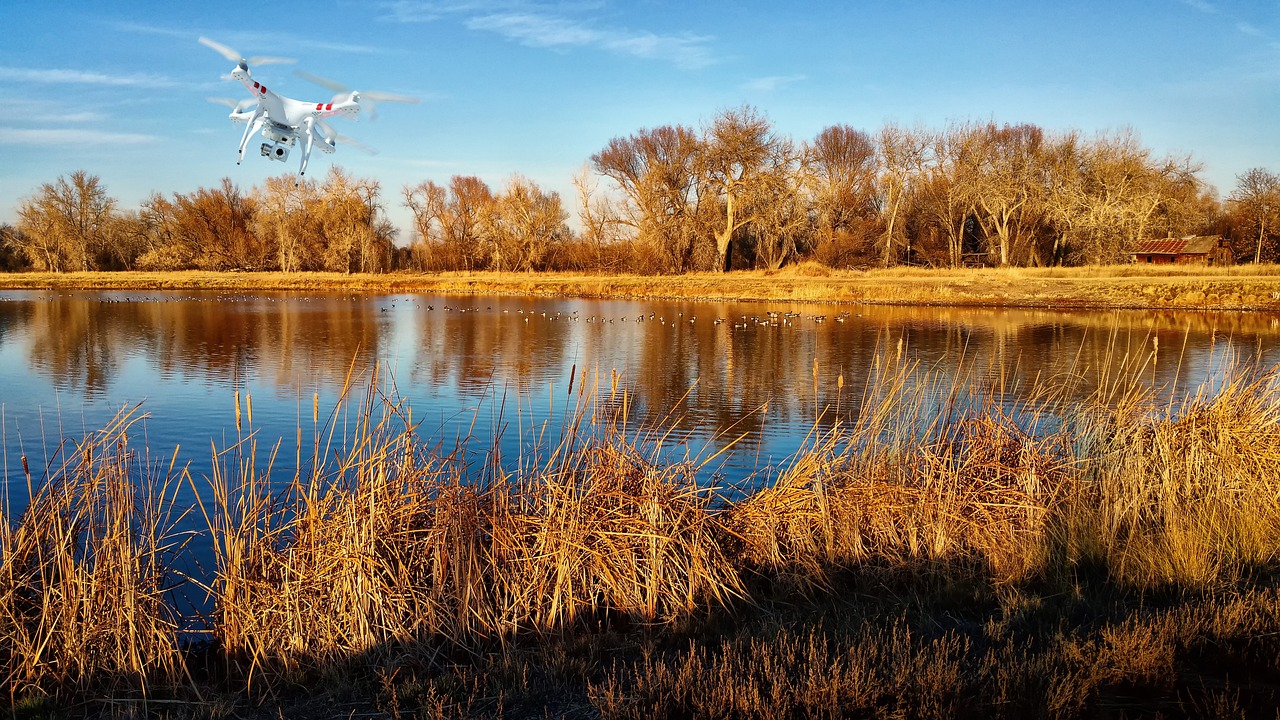
Regulatory Compliance
As ground drones powered by artificial intelligence (AI) continue to evolve, the need for becomes increasingly critical. Governments and regulatory bodies around the world are grappling with how to manage this rapidly advancing technology. The challenge lies in balancing the potential benefits of AI-enhanced drones with the need for safety, privacy, and security. Regulations are essential to ensure that these drones operate within legal frameworks, protecting both the public and the environment.
One of the primary concerns regarding regulatory compliance is the airspace management. Drones must navigate complex airspace systems, which are often congested with manned aircraft. To address this, regulatory agencies are formulating guidelines that dictate where and how drones can operate. For instance, in the United States, the Federal Aviation Administration (FAA) has established rules that require drone operators to maintain visual line-of-sight and to avoid flying over people without special waivers. These regulations are designed to minimize risks associated with mid-air collisions and other potential hazards.
Additionally, data privacy is a significant issue that regulators must address. Drones equipped with AI capabilities can collect vast amounts of data, including images and videos of private property. This raises concerns about surveillance and the potential for misuse of collected information. To mitigate these risks, regulations are being developed to ensure that drone operators respect privacy rights and obtain necessary permissions before capturing data in sensitive areas.
Another aspect of regulatory compliance involves licensing and certification. Many countries require drone operators to undergo training and obtain licenses to ensure they understand the operational guidelines and safety protocols. This training is crucial not only for the safe operation of drones but also for fostering public trust in this technology. As AI continues to enhance drone capabilities, ongoing education and certification will play a vital role in maintaining compliance with evolving regulations.
In light of these challenges, it’s essential for stakeholders in the drone industry, including manufacturers, operators, and policymakers, to collaborate closely. By working together, they can develop comprehensive regulations that address safety, privacy, and operational efficiency. As the regulatory landscape continues to evolve, staying informed and adaptable will be key for all involved in the deployment of AI-powered ground drones.
- What are the main regulatory challenges for AI-powered drones?
The main challenges include airspace management, data privacy concerns, and the need for licensing and certification of drone operators. - How do regulations affect drone operations?
Regulations dictate where and how drones can operate, ensuring safety and compliance with legal frameworks. - Why is data privacy a concern with drones?
Drones equipped with AI can collect sensitive data, raising issues about surveillance and the potential misuse of information. - What steps are being taken to improve regulatory compliance?
Stakeholders are collaborating to develop comprehensive regulations that address safety, privacy, and operational efficiency.

Technical Limitations
While the advancements in AI-powered ground drones are nothing short of revolutionary, it’s essential to acknowledge the that still pose challenges to their widespread adoption. One of the most significant hurdles is battery life. Current battery technologies often restrict the operational range and duration of drones. Imagine sending a drone on a critical mission, only to have it return prematurely due to insufficient power. This limitation not only affects efficiency but can also impact the overall success of missions, particularly in remote or hard-to-reach areas.
Another technical challenge lies in sensor accuracy. While drones are equipped with various sensors for navigation and obstacle detection, these sensors can sometimes be unreliable under certain conditions. For instance, poor weather or challenging terrains can lead to inaccurate readings, which may compromise the drone's ability to navigate safely. The integration of multiple sensors can help mitigate this issue, but it also adds complexity and requires more sophisticated data processing capabilities.
Moreover, the data processing capabilities of ground drones are often limited by their onboard computing power. Although AI algorithms can analyze vast amounts of data, the real-time processing of this information requires significant computational resources. If a drone cannot process data quickly enough, it may struggle to respond to sudden changes in its environment, which could lead to accidents or mission failures.
To illustrate these challenges, consider the following table that summarizes key technical limitations faced by AI-powered ground drones:
| Technical Limitation | Description |
|---|---|
| Battery Life | Limited operational range and duration, potentially leading to premature returns. |
| Sensor Accuracy | Inaccuracy under adverse conditions, affecting navigation and obstacle detection. |
| Data Processing | Insufficient onboard computing power can hinder real-time data analysis and responsiveness. |
Addressing these limitations requires ongoing research and development. Companies and researchers are dedicated to improving battery technologies, enhancing sensor capabilities, and optimizing data processing algorithms. For instance, advancements in solid-state batteries and energy-efficient computing are being explored to extend the operational capabilities of drones. As these innovations come to fruition, we can expect a new wave of ground drones that not only overcome current challenges but also redefine what is possible in drone technology.
- What are the main technical limitations of AI-powered ground drones? The primary limitations include battery life, sensor accuracy, and data processing capabilities.
- How does battery life affect drone operations? Limited battery life can restrict the operational range and duration of missions, potentially leading to premature returns.
- What advancements are being made to improve drone technology? Research is focused on developing solid-state batteries and enhancing sensor technologies to improve overall performance.
Frequently Asked Questions
- What are AI-powered ground drones?
AI-powered ground drones are unmanned vehicles that utilize artificial intelligence to enhance their navigation, decision-making, and operational capabilities. They can navigate complex terrains, process real-time data, and adapt to changing environments without human intervention.
- How does AI improve navigation systems in ground drones?
AI enhances navigation systems by utilizing advanced algorithms that improve GPS accuracy and obstacle detection. This allows drones to traverse intricate landscapes with greater precision, making them more efficient in various applications.
- Can ground drones make decisions on their own?
Yes! Ground drones equipped with AI can make autonomous decisions in real-time, which significantly boosts mission efficiency and safety. This capability is crucial in applications such as surveillance, agriculture, and logistics.
- What role does real-time data processing play in drone operations?
Real-time data processing enables ground drones to analyze vast amounts of information swiftly, allowing them to respond effectively to dynamic environments. This is essential for maintaining operational efficiency and enhancing situational awareness.
- How do machine learning techniques benefit ground drones?
Machine learning techniques allow ground drones to learn from past experiences and improve their performance over time. This continuous learning process helps them adapt to new challenges and optimize their operations.
- What industries are benefiting from AI-powered ground drones?
AI-powered ground drones are transforming various industries, including agriculture, logistics, and surveillance. They provide valuable insights for crop management, streamline delivery processes, and enhance security measures.
- What challenges do AI-powered ground drones face?
Despite their advantages, AI-powered ground drones encounter challenges such as regulatory hurdles and technical limitations. Issues like battery life, sensor accuracy, and navigating complex regulations can hinder their widespread adoption.
- How do regulations impact the deployment of ground drones?
Regulatory compliance is crucial for the deployment of AI-enhanced drones. Current regulations can affect flight operations, privacy concerns, and safety protocols, making it essential for manufacturers and operators to stay informed and compliant.
- What are the technical limitations of ground drones?
Technical limitations such as battery life and sensor accuracy pose significant challenges for ground drones. Ongoing research is focused on overcoming these hurdles to enhance performance and extend operational capabilities.










